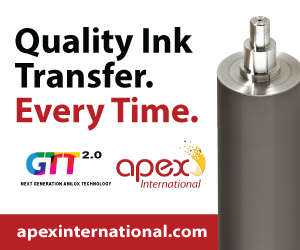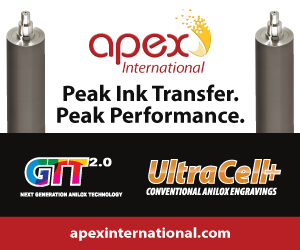by Craig Stobie
With greater consumer choice than ever before, a product’s visual appeal is a crucial factor in capturing consumer attention beyond a loyal customer base. Attractive packaging and labels with unique, eye-catching designs enhance shelf appeal, encouraging consumers to take a closer look.
Stand-out homeware packaging designs might feature print matching the pattern of the tableware within, while limited-edition packaging and labels – such as bottles with custom shrink wrap celebrating sports events or personalization – add a layer of exclusivity and collectability.
While the inclusion of mail-away coupons and competitions on product packaging is nothing new – US cereal giants Kellogg’s and General Mills ran their first promotions more than 100 years ago – historically, the communication between brand and consumer has been one-sided. The objective remains the same: delighting consumers and fostering brand loyalty, but packaging-based promotions have evolved to be more interactive than ever before.
Today, novel packaging is often developed to excite consumers, prompting them to share a photo or unboxing video via their social media accounts – offering free brand exposure or, in the case of the Heinz Tattoo Stencil label, a way to express their die-hard devotion to the brand.
Equipping packaging with QR codes can help bridge the divide between the physical and the digital world, taking consumer experience to a new level. QR codes enable an instant connection between consumer and brand, providing consumer access to product information and allowing brands to capture consumer responses and feedback.
In retail, the transition of packaging barcodes to standardized QR codes powered by GS1 – previously known as the GS1 Digital Link – at the point of sale has begun, increasing brand interest and leading brand owners to discover the technology’s versatile applications.
QR codes powered by GS1 may be small, but they have the power to deliver information to multiple stakeholders via one convenient scan. They provide valuable data and enhanced product traceability to brands and retailers while delivering helpful or engaging content to consumers. What’s more, the content can be changed over time or personalized, without changing the packaging.
This is made possible by the standardized structure of the Uniform Resource Identifier (URI) represented by the QR code. In the simplest terms a URI is a website address that includes a sequence of identifiers and attributes that serve as gateways to information such as expiry dates, serial numbers, and batch/lot numbers, as well as landing pages for marketing content.
Depending on what device or app is used to read the code, certain identifiers are processed to provide access to a specific data source. This means that a mobile phone camera scan might open a landing page presenting information regarding recycling and sustainability to consumers, while brands and retailers using an EPOS scanner might gain access to supply chain tracking and expiry dates to inform dynamic pricing strategies.
Packaging is the key touchpoint between consumer and brand – where consumers expect to find everything they need to know about a product, from allergens and nutrition to usage and recycling instructions – but also the best opportunity for brands to make a lasting connection with the consumer.
With customer retention considered easier than gaining new customers, packaging QR codes allow brands to drive app downloads and sign-ups to loyalty programs and online communities. Members are rewarded with access to exclusive content, discounts, freebies, and events. In return, brands gain a loyal audience for cross-promotion and compliant personal data for use in targeted marketing campaigns.
Competitions and games are popular, and joining games commonly promoted by QR codes on soft drink labels or snack packaging is easy. For example, Coca-Cola’s recurring What the Fanta? Campaign uses QR codes on bottles and cans to give consumers clues about a mystery flavor. In addition to providing entertainment, scannable QR codes can transform time-consuming, mundane tasks such as locating manuals and ordering spare parts, helping to deliver a more convenient consumer experience and enhancing brand loyalty. The addition of variable data elements, such as a batch or serial numbers, enables the content served to change over time: the first scan could open a landing page to provide model-specific assembly, installation, or user videos, while subsequent scans could provide content to assist with warranty registration, for example.
Considering potential returns like this, it is not surprising that connected packaging is high on brands’ priority lists, with 80 percent of respondents of Domino and Appetite Creative’s Connected Packaging Survey 2024 citing that connected packaging will be increasingly important to the packaging industry in the next 12 months and 88 percent planning a connected packaging campaign this year.
Today, forward-thinking brands are using QR codes to create immersive, interactive experiences to enhance interactions with consumers, as well as adopting GS1 technologies to future-proof their business. Providing information for multiple stakeholders via one compact code allows brands to focus label and packaging designs on maximizing consumer appeal and driving scans.
For more information, visit domino-printing.com.
Craig Stobie is the Global Sector Development Director at Domino Printing Sciences.






